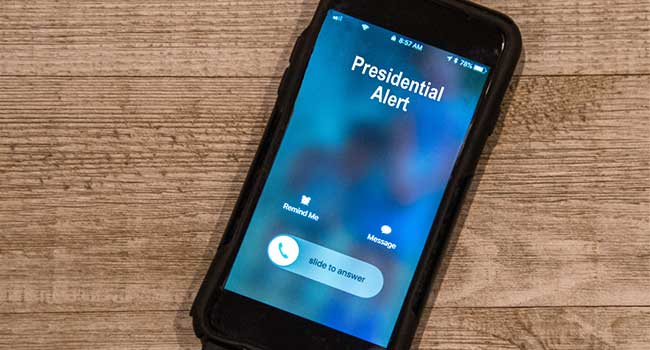
A Test and An Alert
Americans are part of a FEMA alert notice
- By Sulayman Brown, Thomas Crane
- Oct 05, 2018
Millions of Americans received a “test” alert, Oct. 3, issued by the federal government. The national test will use the Federal Emergency Management Agency’s (FEMA) Wireless Emergency Alert (WEA) system and Emergency Alert System (EAS) to deliver alert messages to smart phones, smart devices, televisions and radios.
Ever since the test was announced, there has been speculation and confusion about the reason for the test and what to expect. Fortunately, on April 5, the National Capital Region (which includes the broader Washington, D.C. metropolitan area) conducted the largest-to-date test of the Wireless Emergency Alert (WEA) system and the region’s test results offer insights into what you can expect for the national test.
First, why is this test occurring? FEMA implemented the WEA capability in 2012 and the technology has been used extensively by the National Weather Service and state and local government agencies for regional emergencies, such as hurricanes, however, there has never been a national test of the WEA system. This test will allow FEMA to evaluate a portion of the nation’s alerting capabilities. FEMA officials said, “Nationwide EAS-WEA testing helps FEMA and industry participants to maintain and improve alert and warning capabilities at the federal, state, local, tribal and territorial levels.”
From a local emergency manager’s perspective, “we regularly test and evaluate all our tools, so we have a solid understanding of our capabilities, and the government seems to have similar intentions for the national test.”
Second, what should people expect? Most people in the Unites States will likely receive the alert because citizens can’t opt out of Presidential Alerts. Smartphones will vibrate and a distinct audible tone will blare as a message displays on the screen. If silent mode is enabled, then the alert tone will not sound. Radios and televisions will be interrupted, however, streaming services like Netflix and gaming systems will be unaffected.
The recent National Capital Region alert test targeted more than 5 million people, and approximately 28 percent of survey respondents reported they didn’t receive it, so it’s reasonable to assume that a significant portion of the population will not receive the national test alert.
The WEA system relies on cellular broadcast capabilities, so if you are not near a cell tower, don’t have good reception, or are on a voice call, you may not receive the alert. Not all smartphones and devices are WEA-capable so people that don’t receive the test message should check with their provider and device manufacturer to ensure they can receive WEA messages in the future.
WEA and EAS alerts have some other limitations. For example, WEA messages don’t automatically translate into different languages and cannot include images or maps. Clickable links don’t work in all cases, and there is no two-way interaction or way to track who got the message and who did not.
Ultimately, WEA and EAS are powerful ways to deliver alerts, but there are limitations. People should research their region’s alerting program so they can begin receiving emergency messages through text messages, emails, phone calls, mobile app alerts, social media, and other methods. After all, if we can’t reach you, we can’t alert you.
In the future, if you receive an emergency alert, please read it carefully and take quick and appropriate action. Emergency alerts are only sent in severe circumstances and can save your life.
About the Authors
Sulayman Brown is the assistant coordinator of the operations and outreach division lead with Fairfax County Office of Emergency Management.
Thomas Crane is a senior technical account manager with Everbridge.